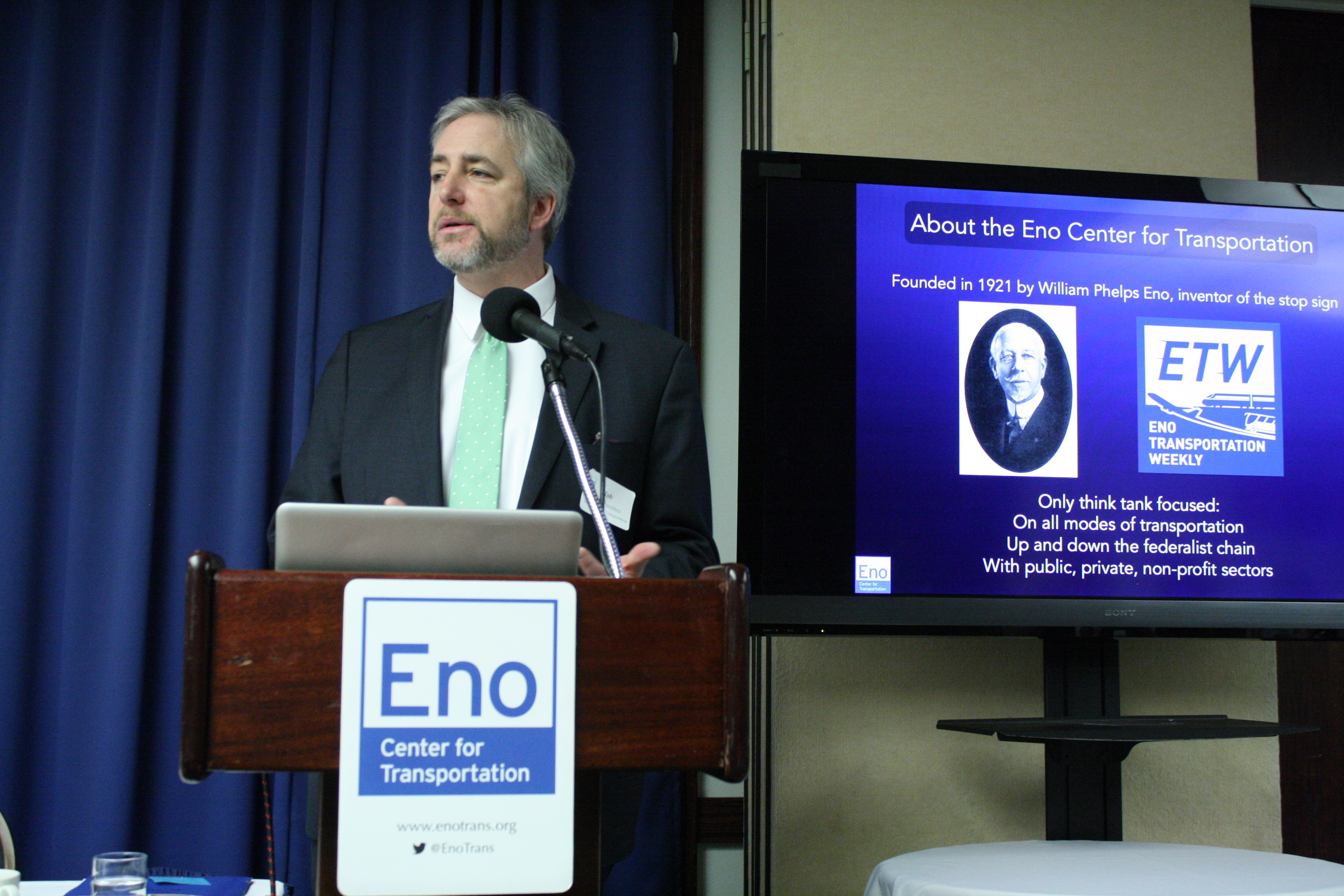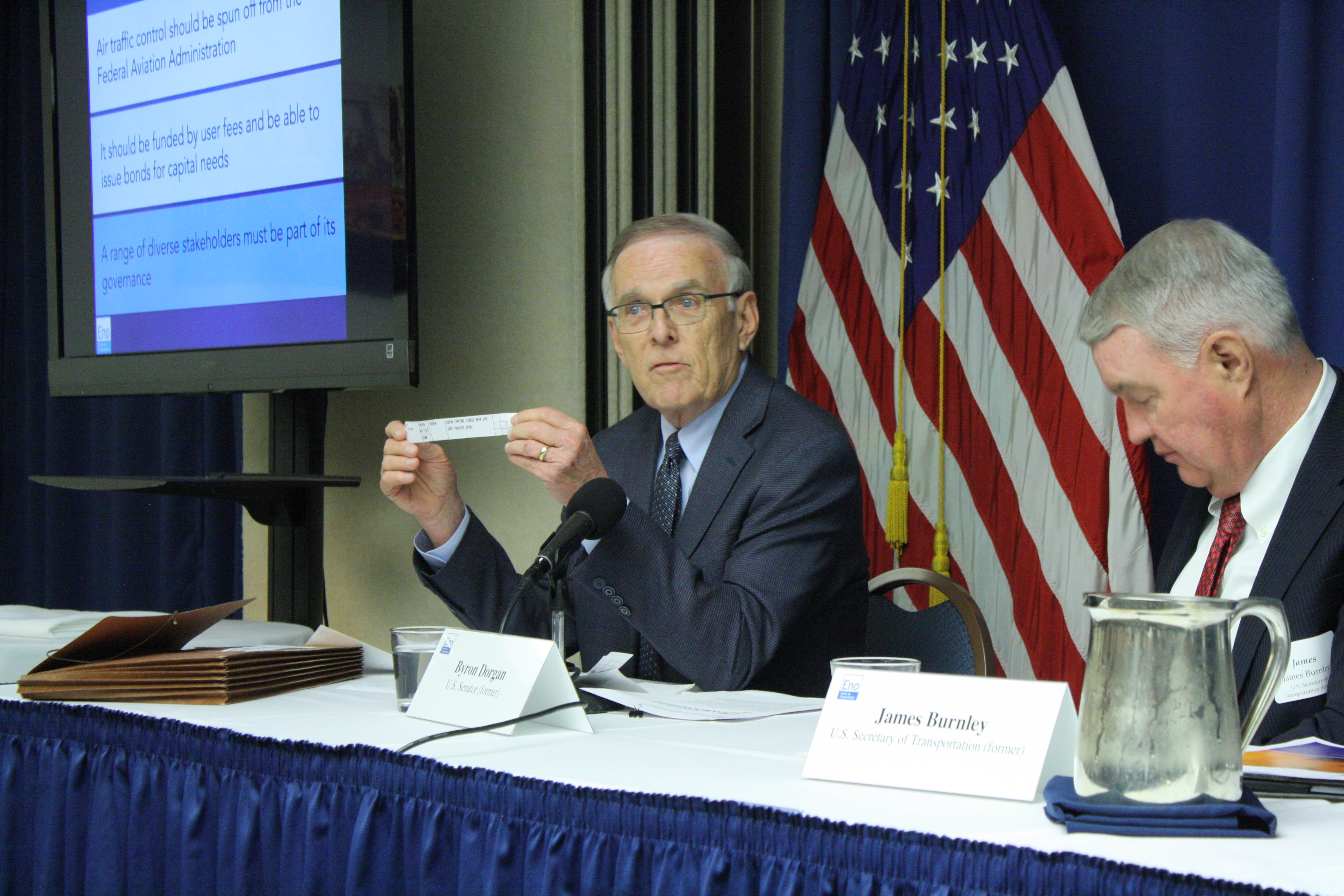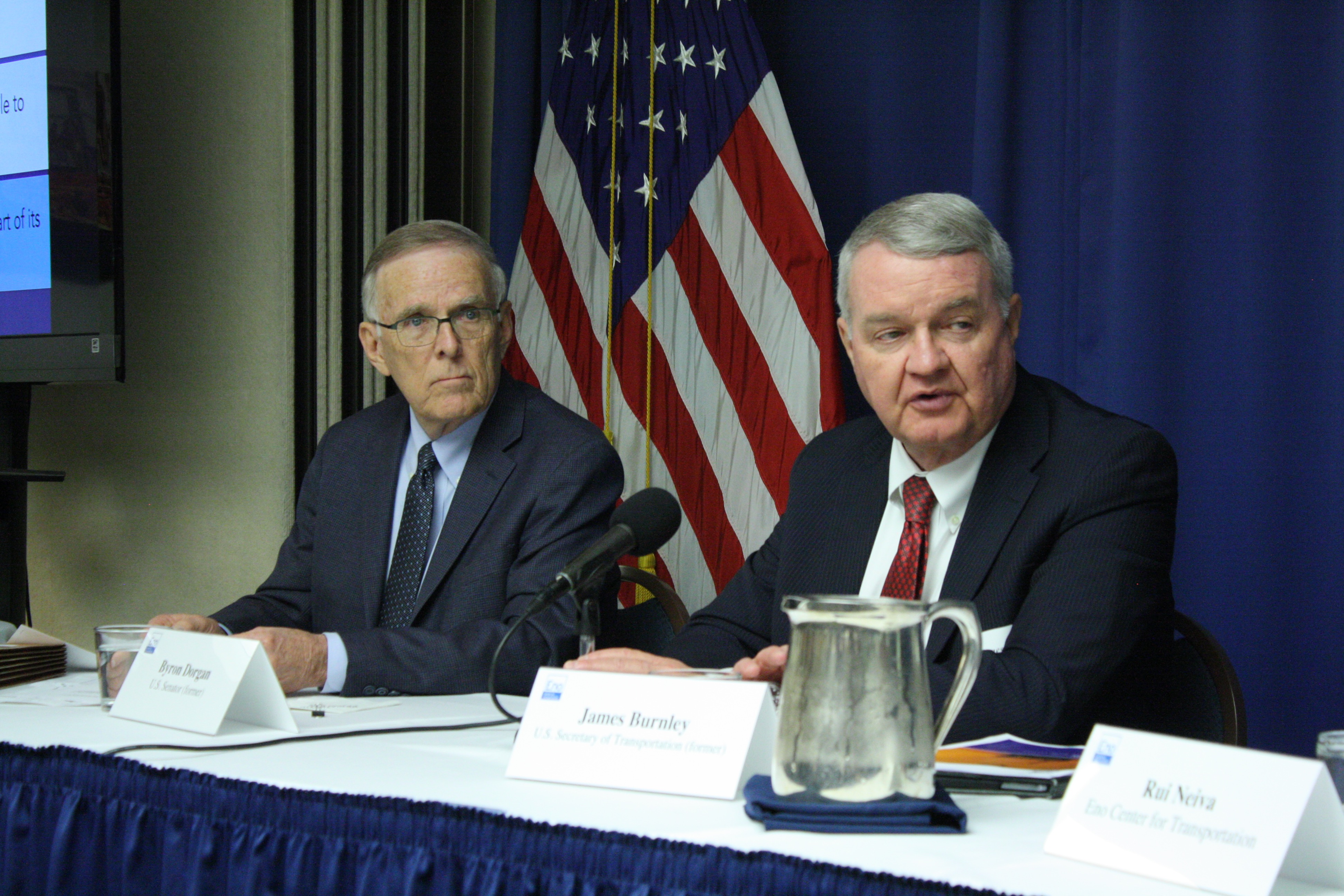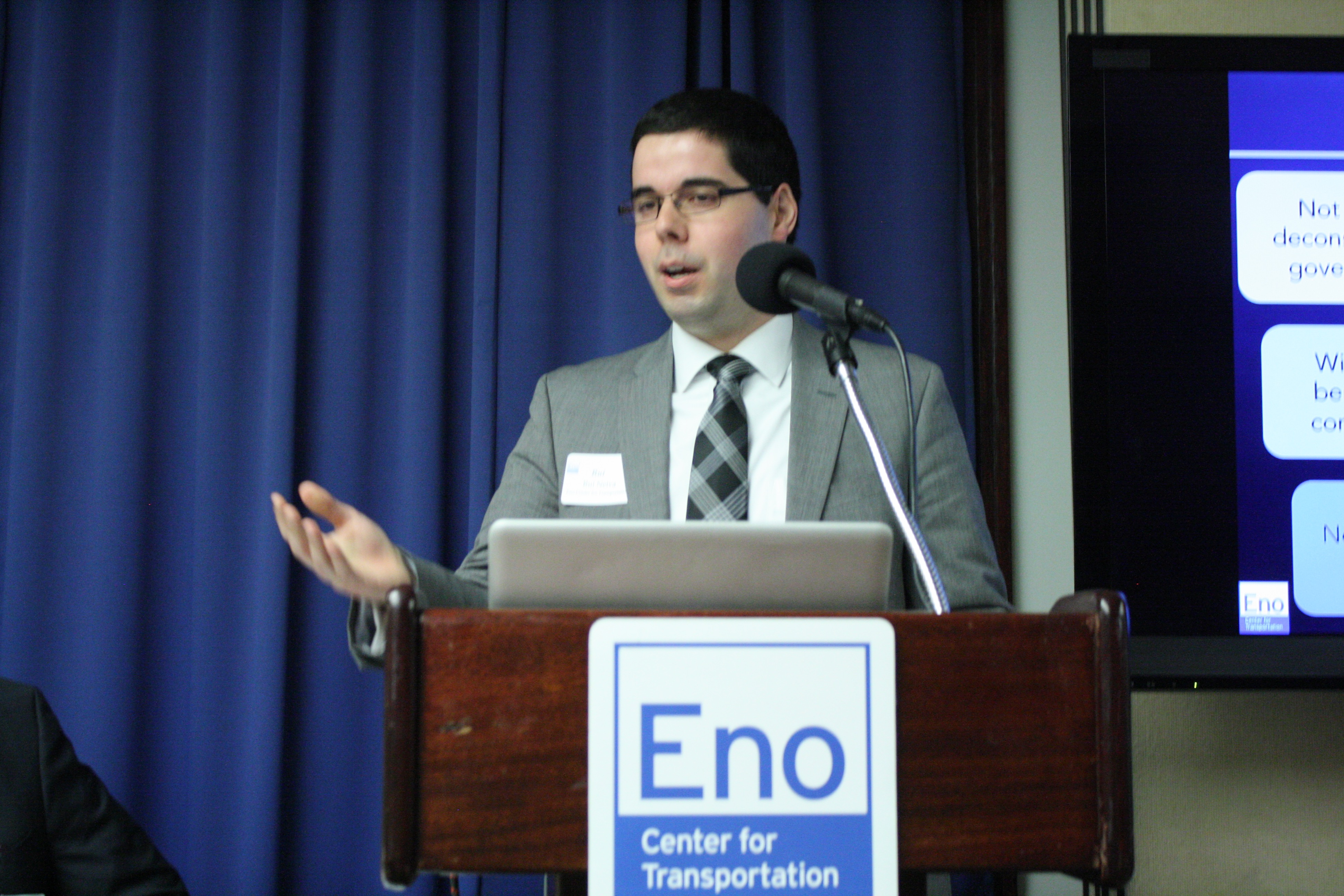March 23, 2017
 For over 30 years, there have been several attempts to modernize air traffic control in the United States. These efforts have been consistently thwarted by the failure of the Federal Aviation Administration (FAA) to implement modernization programs that would update its technology and processes.
For over 30 years, there have been several attempts to modernize air traffic control in the United States. These efforts have been consistently thwarted by the failure of the Federal Aviation Administration (FAA) to implement modernization programs that would update its technology and processes.
But, when it comes to fundamental air traffic control reform, perhaps the third decade is the charm.
At a Washington briefing on March 21, the Eno Center for Transportation briefed stakeholders and reporters on its most recent report, Time for Reform: Delivering Modern Air Traffic Control.
The report was written through a collaborative effort between Eno and its Aviation Working Group, an advisory group made up of a diverse set of experts and stakeholders. The group is co-chaired by former Secretary of Transportation and Chair of Eno’s Board of Directors, Jim Burnley, and former Senator Byron Dorgan (D-ND).
“Our current ATC system is from the Stone Age,” Dorgan said. Holding up a couple of small slips of paper, he elaborated that the FAA currently uses World War II-era technology for ATC operations that relies on using tens of thousands of those paper slips to track flights across the U.S. every day.

“We’re trying to run one of the most complicated, 24/7 businesses using old regulations written for government agencies,” remarked Burnley.
The Eno report reviewed the current challenges facing the ATC system in the United States and evaluated the potential funding and governance solutions to its woes.
“We’re not saying that ATC doesn’t operate well now, but they’re currently burdened by incompatible federal regulations,” said Robert Puentes, President and CEO of Eno. “The current problem is that those regulations slow down FAA procurement – an annoyance for many agencies, but an intractable issue for the FAA.”
Indeed, the FAA has struggled to implement its Next Generation Air Transportation System (NextGen) program in recent years. This would modernize ATC technologies and processes in the United States by implementing a satellite-based system to improve its three core components: communications, navigation, and surveillance.
One of the most significant barriers to implementation is that the FAA – like other federal agencies – must comply with federal procurement rules as it implements this multi-billion project. Initially, NextGen was supposed to be implemented all at once, but the FAA has been forced to scale the project back to a staggered, piecemeal approach of gradual improvements.
“ATC is a business and should be run like a business,” said Rui Neiva, Eno Policy Analyst and a primary author of the report.
The Eno report recommends spinning ATC off from the FAA into a new non-profit independent entity or government corporation. This proposal has garnered broad support from air traffic controllers, a majority of the commercial aviation industry, and other stakeholders.
Nonprofitization would allow the new ATC entity to be self-funded and provide it with bonding authority – two critical components that are missing from the current system under the FAA.
This would also insulate ATC operations from partisan battles in Washington that have previously threatened its operations, funding, and hiring authority. By becoming a private entity that is self-funded and governed by a board of industry stakeholders, the new ATC system could be modernized faster – and also enjoy the stability to conduct long-term planning efforts.
Neiva indicated that there are three myths surrounding ATC reform: that it is a deconstruction of government, that it will harm rural communities, and that it is a corporate giveaway.
“ATC reform isn’t deconstructing government,” he said. “The federal government retains its oversight role and is represented on its governing body, allowing the FAA to focus on its core safety mission.”
Furthermore, he said, ATC reform will have the capacity to enhance the rural aviation network and the new entity’s governing board would include representatives from rural interests. Lastly, Neiva said, ATC reform is not a corporate giveaway since the travelling public has already paid for existing ATC assets and the new entity will be structured to benefit stakeholders.
“ATC reform is a crucial piece of infrastructure – it will not cost anywhere near $1 trillion, but it will have a huge impact,” he concluded.

 For over 30 years, there have been several attempts to modernize air traffic control in the United States. These efforts have been consistently thwarted by the failure of the Federal Aviation Administration (FAA) to implement modernization programs that would update its technology and processes.
For over 30 years, there have been several attempts to modernize air traffic control in the United States. These efforts have been consistently thwarted by the failure of the Federal Aviation Administration (FAA) to implement modernization programs that would update its technology and processes.




